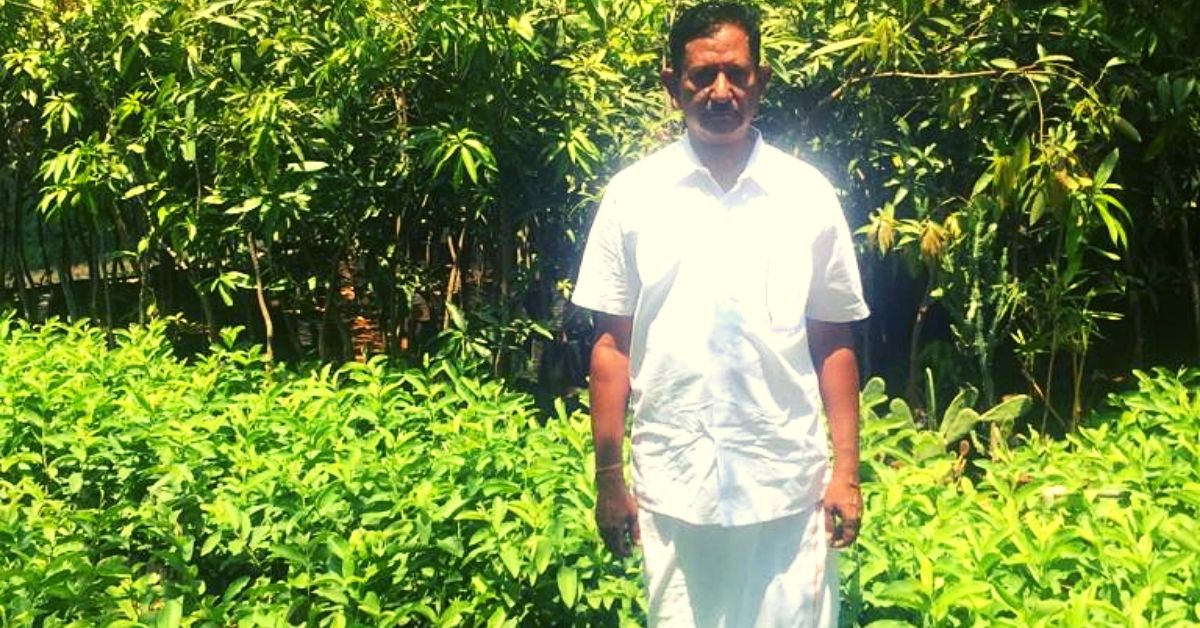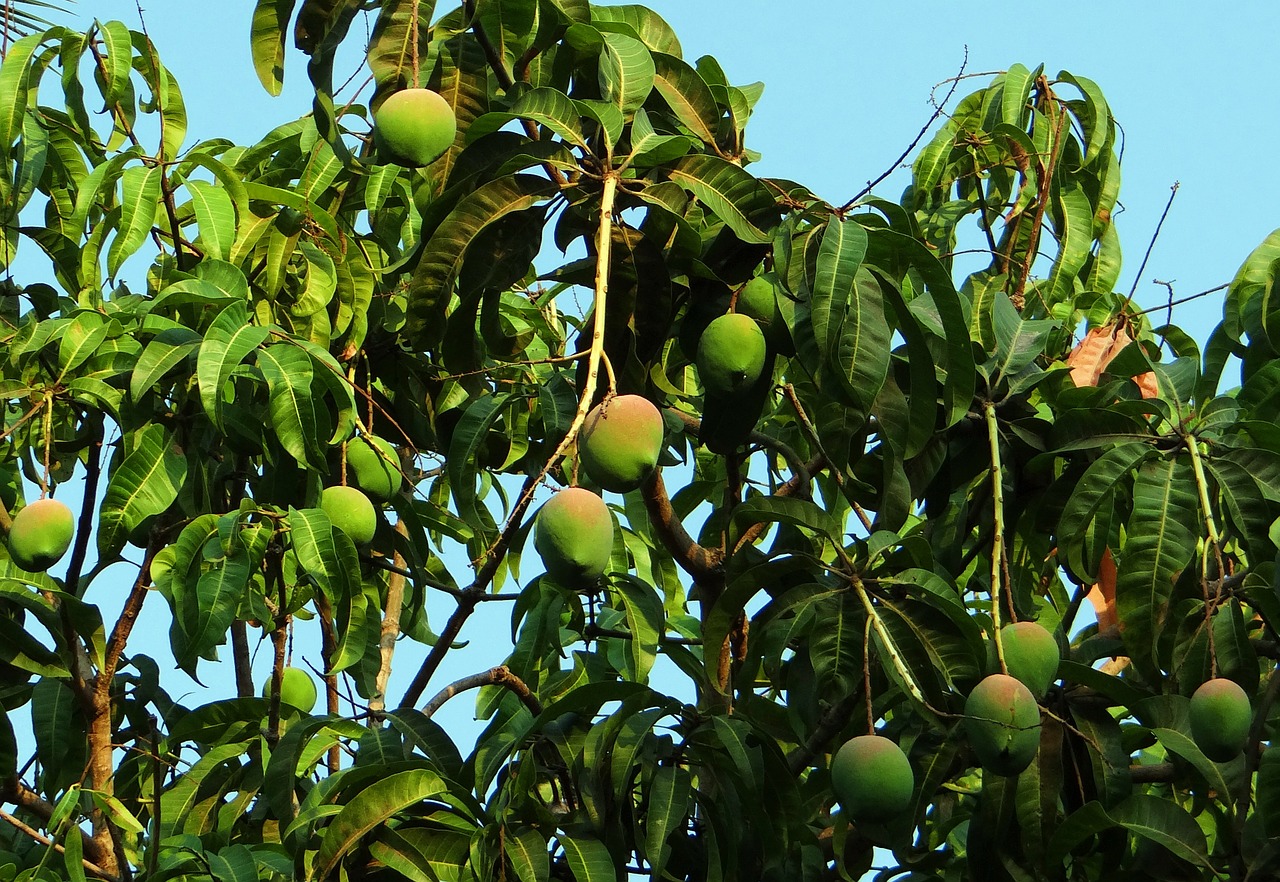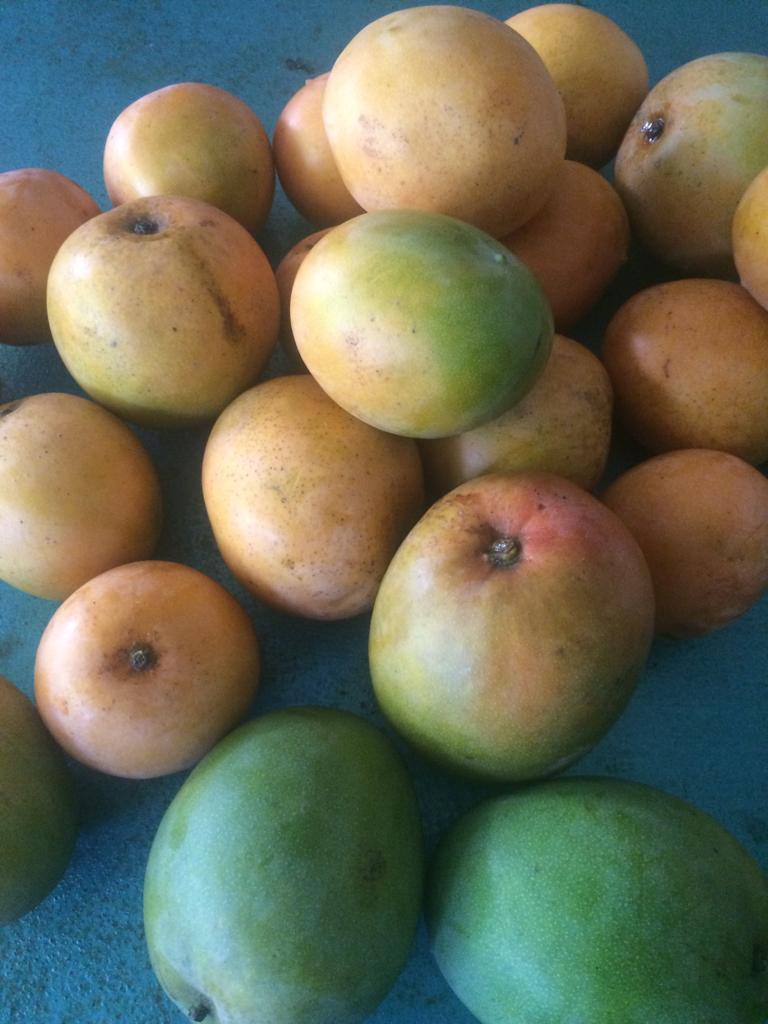63-YO TN Farmer Brings Back Rare Mangoes That Were On The Verge of Extinction!
Heard of the indigenous mango that tastes and smells like jaggery? Or the only mango variety that can be preserved for a year and eaten in mid-winter?

For most of us, the smell of summer is synonymous to the mighty king of fruits, mango. As soon as the sweet-sour fragrance floods the markets, students know that vacations are around the corner. Mangoes are and will always be associated with fond childhood memories.
However, K S Jegannatha Raja’s love for the regal mango is so strong that he is helping many varieties from going extinct. Raja spent most of his formative years in the lush green fields owned by his family in Rajapalayam. In summers, Raja would spend most of his time helping his father in the mango orchards.
Speaking to The Better India, he says:
I have had the privilege of having taste many varieties of mangoes. I say privilege because most of these mangoes have either gone extinct or are on the verge of disappearing from this world.
It was heartbreaking for Raja, a fourth generation farmer, when the Horticulture College and Research Institute at Periyakulam declared ‘Puliyadi’, a native mango, extinct in the late 90s.

The memories of his childhood spent feasting on the delicacy came to the fore upon hearing the news which compelled him to make it a mission to preserve the mangoes that are likely to become extinct and if possible revive the mangoes that have died out.
My elders often spoke about the final tree in one of the farms that gave Puliyadi mango. The tree would flower in February and that would be the advent of Puliyadi. It had wriggly leaves and the fruit had a sweet taste to it.
Raja went on a searching spree with a very tiny possibility and high hopes of finding it.
Within a few days, he found the last surviving puliyadi mango tree and immediately approached his elders with an aim to conserve the tree. He took out a branch and grafted it, creating a mother plant in 2003.

The grafting process took a couple of years to form a tree and once it was ready, he submitted a sample to the Horticulture Institute, “They were amazed to see the variety that they had declared extinct.”
Seeing the success story of Puliyadi, the 63-year-old was motivated to save other endangered species like pottalma, panchavarnam, banganapalli. Among his mango plantation, the Karuppatti kai (literally translates to jaggery fruit) variety is very unique.
This variety can yield up to 1,000 fruits each year and the colour remains green even after the ripening process. It tastes and smells just like jaggery. And the panchavarnam variety can be preserved for a year and eaten in mid-winter, he explains.
Raja’s family owns close to 10 acres of farming land, of which 1.5 acre is dedicated entirely to mangoes. Currently, they have more than 25,000 saplings of 15 types of mangoes.

One of the reasons that Raja attributes to the extinction of mangoes that would once flood the markets across India, is the lack of exports, “Many farmers consume the superior varieties of mangoes and hardly send their produce outside the state. Besides, the yields take a lot of time. Lack of patience and maintenance has resulted in this unfortunate state.”
To ensure that history is not repeated again, Raja selflessly distributed 5,000 saplings of rare mangoes to the local farmers for free, “The mangoes can be grown anywhere and do not require any special land or weather conditions. All that is needed is care and love.”
Raja also fears a surge in the price of traditional mangoes in future, “If we do not preserve these varieties, then we will have to start importing mangoes that were once a specialty of our country.”
Many native fruits are full of nutrients. Besides having a better taste and superior quality, these mangoes also have economical benefits. Due to their high yield returns, the farmers can fetch a better price. I request every farmer dealing in mango plantation to increase their production and effectively market the mangoes, he suggests.
Also Read: Fresh Mangoes Three Times a Year? Meet The Farmer Who Created The Unique ‘Sadabahar’
If you wish to contact him and know more about mango varieties, you can reach out to Raja at: +91 94420 57077
Featured Image Source: Pixabay
(Edited by Saiqua Sultan)
Like this story? Or have something to share?
Write to us: [email protected]
Connect with us on Facebook and Twitter.
If you found our stories insightful, informative, or even just enjoyable, we invite you to consider making a voluntary payment to support the work we do at The Better India. Your contribution helps us continue producing quality content that educates, inspires, and drives positive change.
Choose one of the payment options below for your contribution-
By paying for the stories you value, you directly contribute to sustaining our efforts focused on making a difference in the world. Together, let’s ensure that impactful stories continue to be told and shared, enriching lives and communities alike.
Thank you for your support. Here are some frequently asked questions you might find helpful to know why you are contributing?


This story made me
- 97
- 121
- 89
- 167










